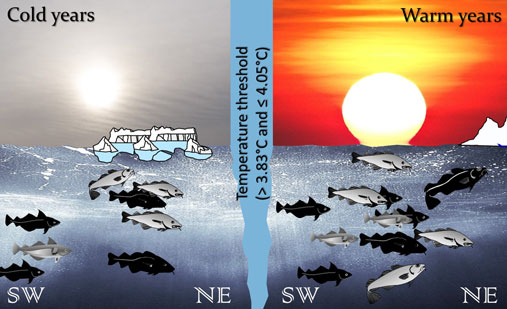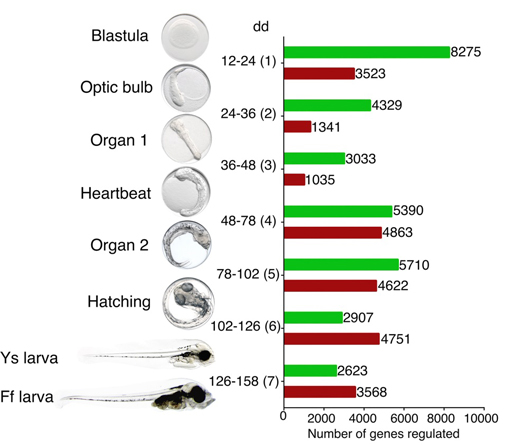Webpages tagged with «Haddock»

The Norwegian coast is a spawning hot spot for several highly valuable fishes. After hatching, the young fish drift, largely together, toward the Barents Sea. During this drifting period, they need to feed and are experiencing predation. In a paper published in Marine Ecology Progress Series (Ferreira et al. 2024) we explore the benefits and disadvantages of drifting together with other larvae.

In the Boreal-Arctic seas, the two most abundant gadoid fish are the Atlantic cod (Gadus morhua) and the haddock (Melanogrammus aeglefinus). Both tend to respond to climate warming by an abundance increase and a change of distribution. Are these changes affecting how they are interacting? Statistical analysis using a state-space threshold model of acoustic and trawl survey data on cod and haddock abundance indicates that the interaction is changing with sea temperature: the cod negatively affecting the haddock when sea temperature is over 4 °C.

The development of haddock embryos is highly impacted by oil exposure as discussed in a previous post. In a new study Sørhus et al. explored the link between transcriptional changes and developmental processes such as pattern formation and organogenesis. The question is to understand the abnormal development in fish.
